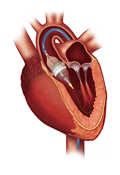Over the long consulting careers of CFA's Principals, the relationship between cardiovascular procedural volume and quality outcomes has continually merited examination.
Multiple studies have addressed the issue for a wide range of cardiovascular procedures. It is intuitive-isn't it?-that higher volume cardiovascular programs produce better outcomes, and vice versa?
Researchers, professional societies (through evidence-based practices), payers and the media have all addressed the issue, in some cases setting guidelines and standards for minimum volumes at both the program and physician operator level. In certain states, falling below a minimum volume standard can trigger a clinical audit and could result in program decertification. Unfortunately, we all know that "volume equals quality" just isn't that simple-it is complex and heavily nuanced.
A recent example of research into this issue was published in the Journal of the American Medical Association in November 2009. The article examined the association of hospital primary angioplasty volume with quality and outcome. One of its authors, Dr. Deepak L. Bhatt of the Cleveland Clinic, concluded that the mortality from small, medium and large volume providers does not differ considerably. Other markers of quality were also studied, such as door-to-balloon times and length of stay. He further concluded that,
"As common sense would suggest, certainly there is a level where volume does matter, but in the contemporary era, that threshold may vary. The best measure of outcome is outcome."
Dr. Bhatt's conclusion is surprising simple, yet profound: the best measure of outcome is outcome. In this era of pay for performance, bundling payments, rewarding specific levels of outcome metrics, demand for increasingly transparent results and heightened public expectations, hospitals need to pay strict attention to Dr. Bhatt's simple conclusion and make it work for their program.
CFA recommends that hospitals (and individual physician operators) whose CV service line volume of a key procedure falls below generally accepted minimum volume indicators take the following actions:
- Acknowledge that for some individuals and organizations, volumes and outcomes will always be linked.
- Establish specific and detailed outcome metrics for your program and insure that all applicable quality outcomes for the procedure meet or exceed generally accepted standards.
- If there are deficiencies, internally acknowledge them and work vigorously, in a coordinated manner, to address and improve performance to initially attain acceptable and then higher levels of performance.
- Enlist the aid of your physician staff in understanding the problem, setting acceptable levels of performance and addressing the underlying issues.
- Take the necessary strategic planning steps to understand the underlying reasons for volume changes and explore what must occur to raise volume above applicable standards. Has volume declined in the overall market? Is there a trend in just one clinical segment of the market? Has a competitor moved market share? Has a key technology changed? Is this a physician supply issue? Remember however, that successfully raising volume does not obviate the need to aggressively manage outcome metrics. Raising volume in the presence of a significant underlying issue could actually negatively impact a key outcome metric.
- Be prepared to defend your volume and related outcomes against any assault-from the media, your competitors, regulators or other interest groups. Have your data ready and your communication plan developed well in advance. In this case, the best offense is a good defense.
- If all else fails, carefully consider any programmatic consolidation opportunity that may arise within the service line. Obviously not for everyone, but for a select few, consolidation may be the optimal solution.
For further information, CFA refers you to Association of Hospital Primary Angioplasty Volume in ST-Segment Elevation Myocardial Infarction with Quality and Outcomes, published in JAMA, November 25, 2009; 302(20); 2207-2213. (http://jama.ama-assn.org/content/vol302/issue20/index.dtl)
